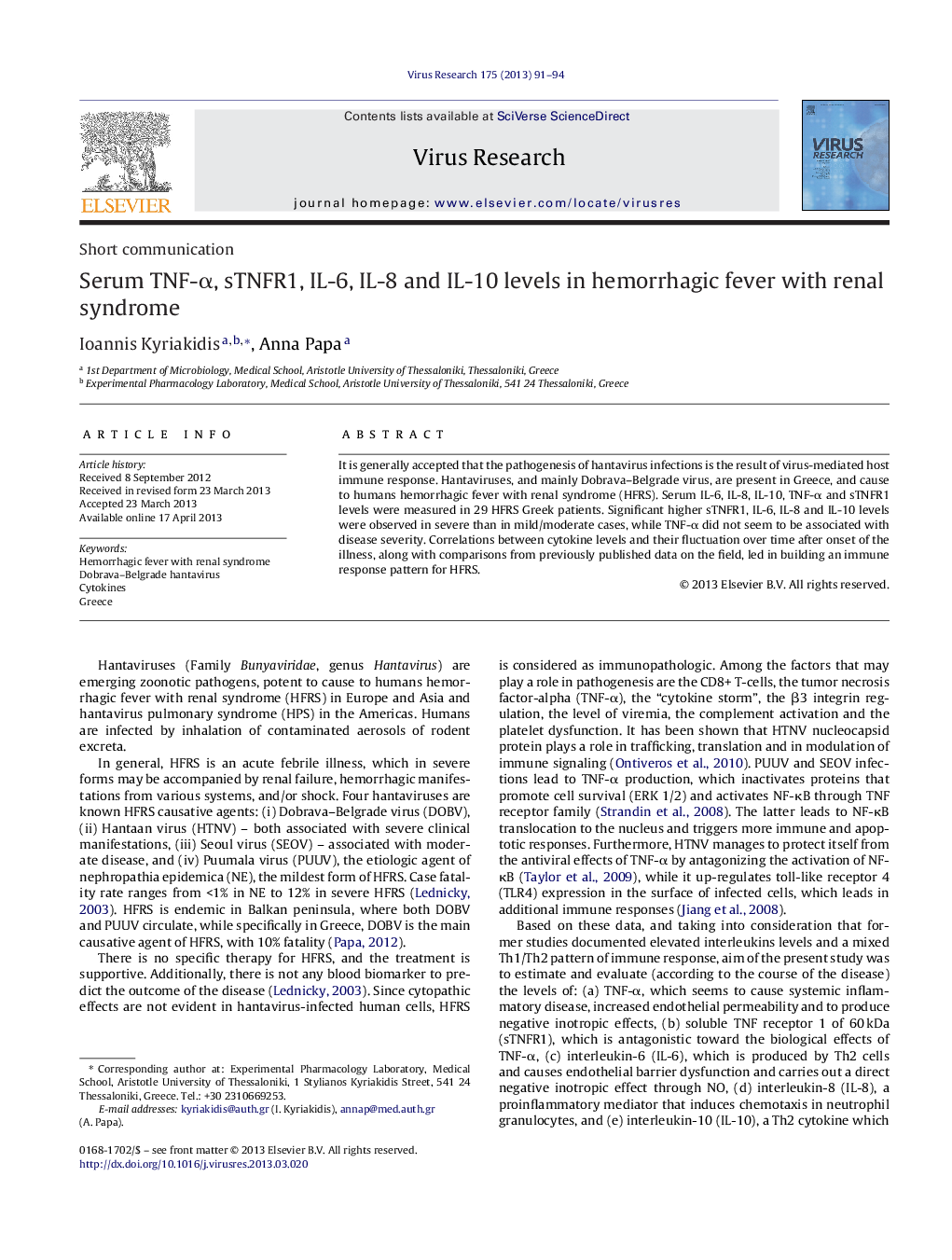| Article ID | Journal | Published Year | Pages | File Type |
|---|---|---|---|---|
| 3428626 | Virus Research | 2013 | 4 Pages |
Abstract
It is generally accepted that the pathogenesis of hantavirus infections is the result of virus-mediated host immune response. Hantaviruses, and mainly Dobrava–Belgrade virus, are present in Greece, and cause to humans hemorrhagic fever with renal syndrome (HFRS). Serum IL-6, IL-8, IL-10, TNF-α and sTNFR1 levels were measured in 29 HFRS Greek patients. Significant higher sTNFR1, IL-6, IL-8 and IL-10 levels were observed in severe than in mild/moderate cases, while TNF-α did not seem to be associated with disease severity. Correlations between cytokine levels and their fluctuation over time after onset of the illness, along with comparisons from previously published data on the field, led in building an immune response pattern for HFRS.
Related Topics
Life Sciences
Immunology and Microbiology
Virology
Authors
Ioannis Kyriakidis, Anna Papa,
